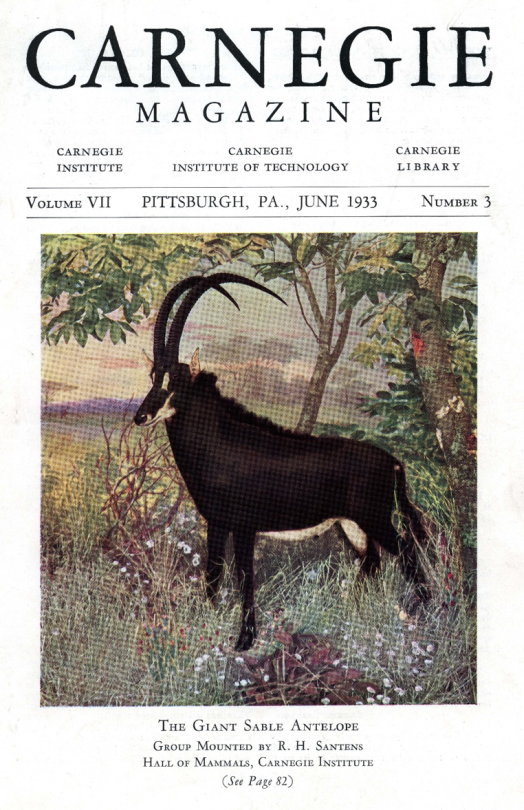By Lisa Miriello

In 1930, New York publisher Ralph Pulitzer recruited Rudyerd Boulton, the Carnegie Museum of Natural History’s ornithologist, to accompany him to the Portuguese colony of Angola in search of the Giant Sable Antelope. Few American zoologists had explored this region of Africa but Boulton had traveled there in 1925 with the American Museum of Natural History and his knowledge of the territory was invaluable to the Pulitzer party.
Hippotragus niger variani was named as a new subspecies less than fifteen years before the Pulitzer expedition and interest in the scientific community, as well as with big game hunters, grew rapidly. Portuguese authorities soon created new game laws to help protect this rare and impressive animal. Never numerous, today the Giant Sable is critically endangered, threatened by habitat loss, civil war, and poachers. Active conservation efforts continue, but population estimates indicate there are less than a hundred mature individuals, found only in Angola’s Cangandala National Park and the Luando Nature Reserve.
The Carnegie Museum of Natural History is one of only a handful of museums in the country where specimens of the Giant Sable have been preserved. The male collected by Pulitzer was expertly prepared by renowned taxidermy artist R. H. Santens and is exhibited on the museum’s second floor.
Lisa Miriello is the scientific preparator in the Section of Mammals at the Carnegie Museum of Natural History. Museum employees are encouraged to blog about their unique experiences and knowledge gained from working at the museum.
